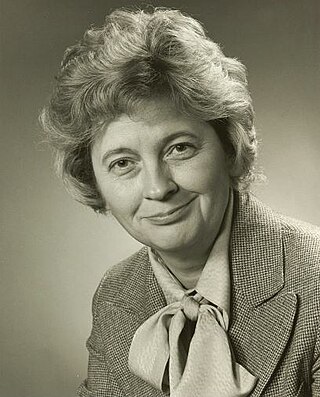The Occupational Safety and Health Administration is a regulatory agency of the United States Department of Labor that originally had federal visitorial powers to inspect and examine workplaces. The United States Congress established the agency under the Occupational Safety and Health Act, which President Richard M. Nixon signed into law on December 29, 1970. OSHA's mission is to "assure safe and healthy working conditions for working men and women by setting and enforcing standards and by providing training, outreach, education, and assistance." The agency is also charged with enforcing a variety of whistleblower statutes and regulations. OSHA's workplace safety inspections have been shown to reduce injury rates and injury costs without adverse effects on employment, sales, credit ratings, or firm survival.

The Occupational Safety and Health Act of 1970 is a US labor law governing the federal law of occupational health and safety in the private sector and federal government in the United States. It was enacted by Congress in 1970 and was signed by President Richard Nixon on December 29, 1970. Its main goal is to ensure that employers provide employees with an environment free from recognized hazards, such as exposure to toxic chemicals, excessive noise levels, mechanical dangers, heat or cold stress, or unsanitary conditions. The Act created the Occupational Safety and Health Administration (OSHA) and the National Institute for Occupational Safety and Health (NIOSH).
The European Agency for Safety and Health at Work (EU-OSHA) is a decentralised agency of the European Union with the task of collecting, analysing and disseminating relevant information that can serve the needs of people involved in safety and health at work. Set up in 1994 by Council Regulation (EC) No 2062/94 of 18 July 1994, EU-OSHA is based in Bilbao, Spain, where it has a staff of occupational safety and health, communication and administrative specialists. William Cockburn is the current Interim Executive Director of EU-OSHA. Council Regulation (EC) No 2062/94 was replaced by Regulation (EU) 2019/126 on the 20 February 2019.
The Michigan Occupational Safety and Health Administration (MIOSHA) is a state government agency that regulates workplace safety and health in the U.S. state of Michigan. Michigan OSHA is an agency within the Michigan Department of Licensing and Regulatory Affairs, and operates under a formal state-plan agreement with the Occupational Safety and Health Administration (OSHA).
Environment, health and safety (EHS) is the set that studies and implements the practical aspects of protecting the environment and maintaining health and safety at occupation. In simple terms it is what organizations must do to make sure that their activities do not cause harm to anyone. Commonly, quality - quality assurance and quality control - is adjoined to form the company division known as HSQE.

An occupational hazard is a hazard experienced in the workplace. This encompasses many types of hazards, including chemical hazards, biological hazards (biohazards), psychosocial hazards, and physical hazards. In the United States, the National Institute for Occupational Safety and Health (NIOSH) conduct workplace investigations and research addressing workplace health and safety hazards resulting in guidelines. The Occupational Safety and Health Administration (OSHA) establishes enforceable standards to prevent workplace injuries and illnesses. In the EU, a similar role is taken by EU-OSHA.

Eula Bingham was an American scientist, best known as an Assistant Secretary of Labor for Occupational Safety and Health (OSHA) during the Presidency of Jimmy Carter. During her tenure as the head of OSHA, she eliminated more than 1,000 pedantic regulations and shifted the agency's focus to health and safety risks, establishing strict standards for workers' rights to know about their exposure to hazardous substances.
A recommended exposure limit (REL) is an occupational exposure limit that has been recommended by the United States National Institute for Occupational Safety and Health. The REL is a level that NIOSH believes would be protective of worker safety and health over a working lifetime if used in combination with engineering and work practice controls, exposure and medical monitoring, posting and labeling of hazards, worker training and personal protective equipment. To formulate these recommendations, NIOSH evaluates all known and available medical, biological, engineering, chemical, trade, and other information. Although not legally enforceable limits, RELS are transmitted to the Occupational Safety and Health Administration (OSHA) or the Mine Safety and Health Administration (MSHA) of the U.S. Department of Labor for use in promulgating legal standards.
North American Occupational Safety and Health (NAOSH) Week is an annual celebration that happens during the first full week of May. The aim of the event is to raise awareness about occupational safety, health, and the environment (OSH&E) in order to avoid workplace injuries and illnesses.

Around the world, nearly 250 million children, about one in every six children, ages 5 through 17, are involved in child labor. Children can be found in almost any economic sector. However, at a global level, most of them work in agriculture (70%). Approximately 2.4 million adolescents aged 16 to 17 years worked in the U.S. in 2006. Official employment statistics are not available for younger adolescents who are also known to work, especially in agricultural settings.
The US National Institute for Occupational Safety and Health funds the Adult Blood Lead Epidemiology and Surveillance (ABLES) program, a state-based surveillance program of laboratory-reported adult blood lead levels. In 2009, the ABLES program updated its case definition for an Elevated Blood Lead Level to a blood lead concentration equal or greater than 10 micrograms per deciliter (10 μg/dL). This chart shows CDC/NIOSH/ABLES Elevated blood lead level case definition in perspective.
The Oregon Occupational Safety and Health Division is a state government agency that regulates workplace safety and health in the U.S. state of Oregon. Oregon OSHA is a division of the Oregon Department of Consumer and Business Services and operates under a formal state-plan agreement with Occupational Safety and Health Administration (OSHA). Oregon OSHA's regulatory authority comes from the Oregon Safe Employment Act (OSEA); its jurisdiction covers most public and private sector workplaces in the state. Oregon OSHA's expressed mission is "to advance and improve workplace safety and health for all workers in Oregon."
An occupational fatality is a death that occurs while a person is at work or performing work related tasks. Occupational fatalities are also commonly called "occupational deaths" or "work-related deaths/fatalities" and can occur in any industry or occupation.

A physical hazard is an agent, factor or circumstance that can cause harm with contact. They can be classified as type of occupational hazard or environmental hazard. Physical hazards include ergonomic hazards, radiation, heat and cold stress, vibration hazards, and noise hazards. Engineering controls are often used to mitigate physical hazards.
ANSI Z535 is an American standard that sets forth a system for presenting safety and accident prevention information. It corresponds to the international ISO 3864 standard and can be integrated with other ISO standards to meet global HazCom standards when products and related documentation must be properly labeled for export.

Occupational safety and health (OSH) or occupational health and safety (OHS), also known simply as occupational health or occupational safety, is a multidisciplinary field concerned with the safety, health, and welfare of people at work. These terms also refer to the goals of this field, so their use in the sense of this article was originally an abbreviation of occupational safety and health program/department etc. OSH is related to the fields of occupational medicine and occupational hygiene.

The Mount Sinai Selikoff Centers for Occupational Health are a set of occupational and environmental health clinics that focus on the prevention, diagnosis, and treatment of workplace injuries and illnesses. Significant injuries and illnesses that are treated at the clinical centers include occupational lung cancers, manganese/silica/lead exposures, and asbestos-related illness, which was the career-long research of Dr. Irving Selikoff, the centers' inaugural director. The Selikoff Centers for Occupational Health's multidisciplinary health care team includes physicians, nurse practitioners, industrial hygienists, ergonomists, social workers, and benefits specialists, who are "leaders in the prevention, diagnosis and treatment of workplace injuries and illnesses," and provide comprehensive patient-centered services in New York City and Lower Hudson Valley. The clinical centers are located within the Icahn School of Medicine at Mount Sinai under the Division of Occupational and Environmental Medicine.

Edgar L. McGowan was the first and longest serving Commissioner of the South Carolina Department of Labor. He served as Commissioner of Labor from February 7, 1971, to June 30, 1989.
The Washington State Department of Labor and Industries (L&I) is a department of the Washington state government that regulates and enforces labor standards. The agency administers the state's workers' compensation system, conducts workplace inspections, licenses and certifies trade workers, and issues permits for heavy machinery.

Hazard controls for COVID-19 in workplaces are the application of occupational safety and health methodologies for hazard controls to the prevention of COVID-19. Vaccination is the most effective way to protect against severe illness or death from COVID-19. Multiple layers of controls are recommended, including measures such as remote work and flextime, increased ventilation, personal protective equipment (PPE) and face coverings, social distancing, and enhanced cleaning programs.









